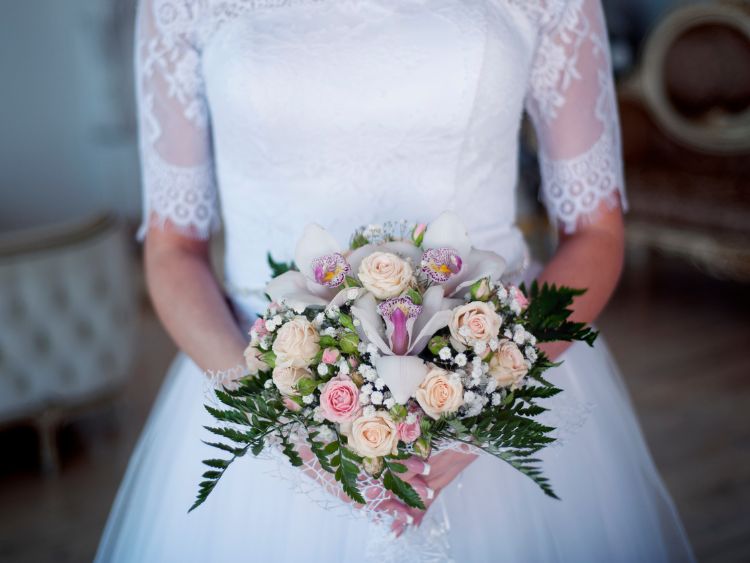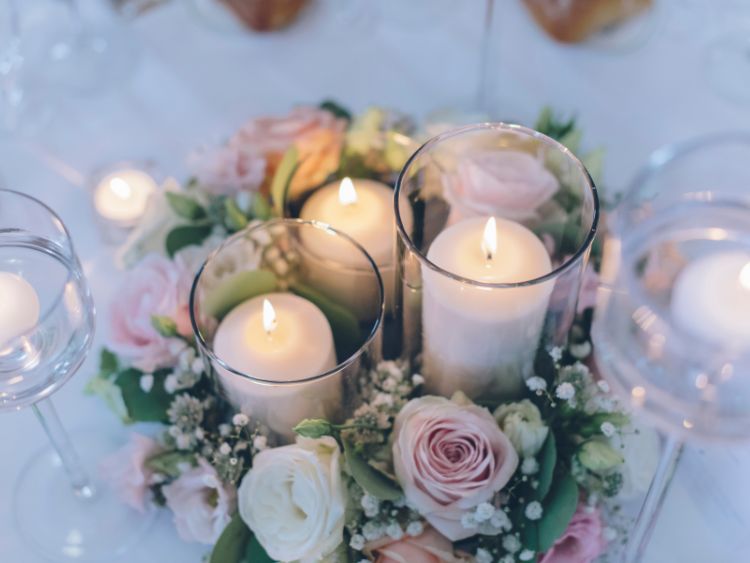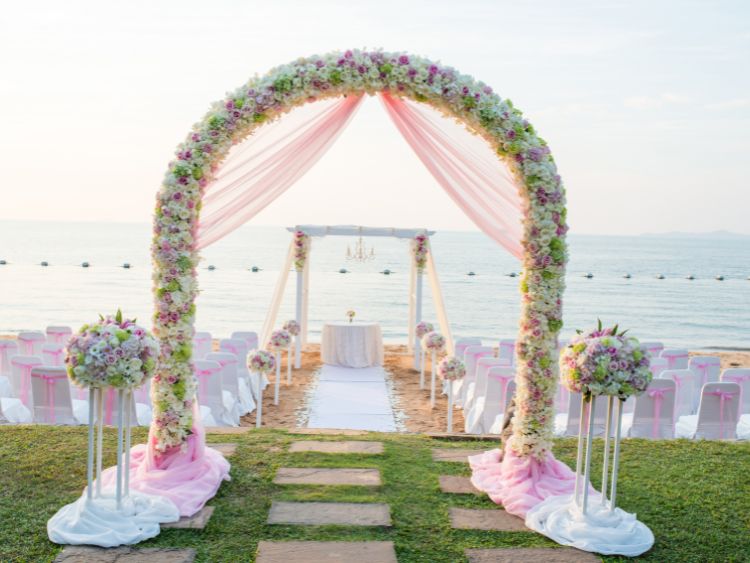Four of the BEST Wedding Photography Tips For Beginners
Tip 1: Make it legal
A signed contract is one of the most common mistakes that a photographer makes when photographing weddings. A legally binding contract is a legal agreement that you and your client have.
A contract is a document that your client signs. It indicates their agreement with your role in the wedding. Your tasks will be clearly stated in the contract, as well as what your clients will get. The contract serves to protect both parties, particularly since money is involved.
Make your booking legal by signing a contract and paying a retainer. Both can be done through ShootProof. You can use an attorney-drafted contract template in ShootProof’s Marketplace or the Invoices feature.
Congratulations if you have already received a signed retainer and contract. Get ready to take the next step!
Tip 2: Keep your lines of communication open
A series of inquiries, bookings and payment discussions are the backbone of every wedding photography shoot. Effective communication is key to establishing expectations and preparing for the shoot. Clients should have an easy way to reach you via phone, email, and social media.
Rapidly Respond
It can be scary to reply to messages when you are just starting out. Sometimes, the client may not respond immediately. This can make it seem like you’re making a mistake.
This is normal. Your couples are busy planning their wedding. It doesn’t matter how long it takes for them to respond, it is important to answer their questions as soon as possible. You will get more friends if you give them a great experience.
Ask a Question
Send your couple a questionnaire leading up to the big day asking for details. You should know when coverage starts, where you will be, what locations you will need to be at all times, who the wedding party is made up of, and any images that your client requested.
Use questionnaires to get to know your couple better. Learn about their relationship, where they met and what their story is. Also, find out why they chose the wedding venue they chose. These details can be used to create a blog post about the event.
Organise a meeting
Set up a meeting with your couple about two weeks before the wedding. This meeting can be held in person or via FaceTime, depending on how convenient it is for you and your couple.
Even if you haven’t done an engagement session with your client, it’s great to meet face-to-face with them before the big day. You can review the timeline with your client in person and ask any questions they may have.
Tip 3: Make a Workflow
A wedding photographer is more than just taking photos of events. You’ll be responsible for booking, email communication, post processing, delivery, and billing. You can streamline your workflow if you do all this yourself.
Use Studio Management Software
You might notice that client communication is a crucial part of any business. Tave Studio Management Tools allows you to send automated messages so that your clients receive their questionnaires and contracts in a timely manner.
Software that helps you manage a studio’s workflow can also be helpful. Many tools have a dashboard that allows you to create a timeline for wedding photography. You can assign deadlines to each task so that you know which ones are most important. It is crucial to set deadlines when photographing weddings.
Tip 4: Create your shot list
This is not the shot list for your client!
This is your list of photos you want to take before it is too late. What are you expecting from yourself?
Make a list of 25 essential items that you are sure to remember. These photographs should be second nature.
Photographing a wedding is hard work. If you are constantly looking at a piece paper, you will be distracted and miss the real moments. If you can feel your gut and know what you want to photograph, you will be fully present and invested in the creative process.
Detail shots
During the wedding preparations, you might be the first to arrive. The couple, their family and friends may just be getting started with hair and make-up. It is a great opportunity to capture details such as:
- Close-up photos of the rings, cord and veil
- Bouquets, corsage and other flower arrangements
- Invitation
- Suits and dresses to hang
- Shoes
- Jewelry, perfume, and cufflinks are just a few of the accessories available.
Perhaps the bouquet was made by the grandparents. Perhaps the groom’s tie is a hand-me down or heirloom. Maybe the couple became close over their invitation design.
They may look simple, but they might have deeper sentimental meaning. These items serve as reminders of personal details about the wedding. These are important reminders of the personal details of your wedding. You never know what emotions you might get from looking at these images.
Bridal Coverage
Bridal coverage shows how the bride prepares to be married. It’s about time spent with her special friends. These are the things you should take a few minutes to capture:
- The hair and makeup of the bride, maid-of-honor, and bridesmaids
- Parents help the bride to find accessories
- Fun with the bride: Maid of honour and bridesmaids
- Bride puts on her dress
- Group photos with the family
Photographs of the bride in creative poses beside a large window, on the staircase or in other beautiful areas at the venue
Boudoir shoots available if requested by the client
Groom Coverage
The coverage of the groom captures the men preparing for the event, just like the bridal shoot. It’s about having fun with your best friends. You should allow at least 30-45 minutes for moments like:
- Enjoy a ‘cheers shot’ with beer or scotch
- Put on jacket, tie and cufflinks for the groom
- Family photos
- Single pictures of the groom
- The wedding party is a fun and quirky photo
Ceremony
Remember that you cannot control what happens at the ceremony. You have to be alert and capture what happens to the best of you ability. You should have the best gear and information for the ceremony. It is both the most difficult and most important part of the day.
Get a copy of the Ceremony Schedule
First, get a copy from clients or coordinators. Although every wedding is similar, you might not be familiar with certain parts of the ceremony. You will need to know the exact timeline.
It is your responsibility to anticipate the flow of the wedding ceremony so you can photograph it in the best possible spot. It’s less likely to miss important moments, such as the procesional, exchanging vows and rings, or the first kiss.
Clarify Wedding Traditions
Photographers will encounter many cultural and religious traditions. It is important to be able to anticipate what you will encounter, and to also know the rules.
You may need to adjust the coverage of your policy depending on religious or regional traditions.
A Hindu wedding, for example, may span multiple days. Catholic weddings include the Liturgy of the Eucharist and Communion. You can see that a lot depends upon the faith tradition. This is why it’s important to be familiar with key details before you start shooting.
These are the Must-Have Shots
It doesn’t matter if the wedding is religious or civil, there will be a common outline. It is important to capture every aspect of the wedding.
- Wedding party procesional walking down the aisle
- The reaction of the groom when the bride enters
- Bride walks down the aisle
- Opening remarks and address by the officiant to the couple
- Vows and rings exchange
- Pronunciation of marriage
- You must never miss the front and center angles for your first kiss!
- Reaction photos of family, friends and guests
- Recessional exit or confetti-filled exit
- Signing the ketubah and other marriage contracts
Group and family shots
Depending on the preferences of the client or church policies, group shots might not be possible. The couple might want to go to their cocktail party at this point. It’s up to you to keep the party moving and take control.
You can speed up the process by letting event coordinators know that you will be taking formal group photos. Here are some standard group photos to be taken, aside from the official wedding and groom photos.
- The officiant will marry the bride and groom
- Each set of parents includes the bride and groom
- The bride and the groom are accompanied by their immediate families
The bride and the groom are accompanied by each extended family (grandparents aunts uncles cousins nieces nephews).
You can simplify the process of taking wedding photos by following a specific sequence. You will be a blessing to your couple as they can save precious party time.
Reception
This is the most exciting part of the day. The reception, just like the ceremony is out of your control. Here are some key points to keep in mind:
Details like the reception setup, table settings, place cards and wedding favors
- Cocktail hour
- Grand entrance
- Toasts and speeches
- Cake cutting
- Specialty dances and first dance
- Bouquet and garter ss
Bridal couple interact with guests
- Get on the dance floor
- Additional games
- Sparkler exit
- Seek the Action
The reception allows guests to move more than when photographing a wedding ceremony. The reception offers many opportunities to capture candid shots, even if it isn’t part of the program such as the first dance or cake cutting.
You can take a look at where the fun is taking place. Are they on the photobooth or dance floor? To get genuine smiles, go to the area where you can hear people talking and laughing at each other.
You can capture the unexpected moments in wedding photography. You should be open to situations that you might not notice, but which will make great memories for the couple.
Do not forget the composition
Many wedding photographers struggle with composition. You might encounter some common problems when you first shoot a wedding.
Before you snap the photo, take a moment to look at your composition. Be sure that there aren’t any distracting elements in the shot. Look for other angles to shoot the scene.
Frame the Bride and Groom with People and Things
Take a look at any frames in the venue to get a new perspective. These elements can be a window or an archway, which will serve as the background. The addition of architectural elements to balance the composition can add symmetry to your photos.
You can also use guests to frame the couple’s images to add more context. This allows you to show people’s reactions or attention to the ceremony.
You can capture their reaction when they weep during the couple’s vow renewal. It is also possible to predict the reactions of the guests when the couple is about cut their cake.
Move like the Wind
One of your goals during weddings is to be fast! You should always be respectful and not disturb guests when taking close-up photos. If your camera has a silent shutter mode, you can use it to reduce noise while taking photos.
Do some practice before the event
You should practice shooting before your big day. Watch videos and read articles about wedding photography. You can also visit the venue to take photos if you have time.
Read Also:
https://www.weddingforlife.us/blackish-wedding/
https://www.weddingforlife.us/wedding-marriage/
https://www.weddingforlife.us/the-proposal/
https://www.weddingforlife.us/wedding-guests-refuse/
https://www.weddingforlife.us/home-wedding-cake/
https://www.weddingforlife.us/wedding-gown-preservation/
https://www.weddingforlife.us/wedding-tends/
https://www.weddingforlife.us/six-women-share-their-experiences/
https://www.weddingforlife.us/gorgeous-engagement-photo-ideas/
https://www.weddingforlife.us/right-time-to-start-a-conversation-with-your-partner/


